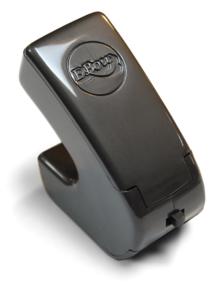Tune Up: Alternative Picks
posted in: Features • Reviews & Playlists
 If you play guitar (or know a friend who does), you’re familiar with the age-old question, Does anyone have a pick? Undoubtedly, someone always has one in their wallet or pocket. As such, this tiny piece of plastic has become the standard sound of a guitar. I’d like to spend this week, though, giving you some alternatives to this somewhat overused sound. There are a bunch of different types of implements that are designed specifically to make a guitar sound that aren’t a standard pick.
If you play guitar (or know a friend who does), you’re familiar with the age-old question, Does anyone have a pick? Undoubtedly, someone always has one in their wallet or pocket. As such, this tiny piece of plastic has become the standard sound of a guitar. I’d like to spend this week, though, giving you some alternatives to this somewhat overused sound. There are a bunch of different types of implements that are designed specifically to make a guitar sound that aren’t a standard pick.
 E-Bow
E-Bow
The E-Bow, short for “Electronic Bow” ( refers to resemblance to a bowed orchestral string) has become one of the most intriguing guitar-related devices to me. This small plastic gadget runs on batteries and generates an electro-magnetic filed in front of it. Therefore, when placed in the vicinity of a metal guitar string, the string is set into motion. The result is a very unusual sound, not often heard on an electric guitar. Twisting and shaking the device near the strings alters the electro-magnetic field, which creates some very interesting harmonic overtones, and sonic warbles. You can also alter volume based on the distance to the strings (allowing fade ins and outs with more intuitive control). If you can ever get your hands on one of these to try out (at a music store or a friend’s house), I recommend spending some time with it. You’ll probably want one when you’re done.
 Jellifish
Jellifish
From the first time I saw a picture of this pick in a magazine, I was curious. I’ll put a picture here, but for all intents and purposes, this is the guitar pick equivalent to brushes for a drum set. What really seals the deal is this product’s versatility. You can hold the pick like a standard guitar pick, so you don’t need to get used to a new feel. However, when you strum like you’re used to strumming, it will sound much like you would expect a pick made of metal wires to sound. You get a very chorusing, echoing sound. The sound has a faint resemblance to a 12-string guitar even if the guitar itself isn’t one.
Beyond this, you can drag the pick across the strings, strum from different angles, and even isolation some of the wires to create a very thin sound. It was a fun pick to play around with. I recorded a session with it once and have since used many of the takes, not only for musical purposes but also for isolated, artistic sound effects. It’s affordable and versatile. What more can you ask for?

Felt Picks
There are some guitar picks made of odd materials and some finger picks that I’ve found useful for isolated techniques. First, on my list is a metal pick. While I don’t use standard metal picks that often, I’ve used metal thumb picks for gritty, claw-hammer applications quite frequently. I get a really full, thick sound and even get some inherent scraping. These are great for steel resonator guitars. Another pick I’d like to recommend is a felt pick. While they don’t last very long, these thick, soft picks are really mellow-sounding, as expected. I’ve gotten great results for acoustic ballads and nylon string guitars. Again, keep in mind that you’ll need to get at least a few of these as they do break and wear much earlier than standard plastic picks.
In the end, your pick of choice (whether it’s your fingers or an object) is entirely contingent upon the application. I do recommend having an arsenal of picks. Keep an eye out for sales at your local music store. I once got about 30 picks (finger, felt and standard) all for a dollar. As I’ve said before, it’s best to be prepared. You don’t want to be at a show or in the studio and be held up because you don’t have right pick.
